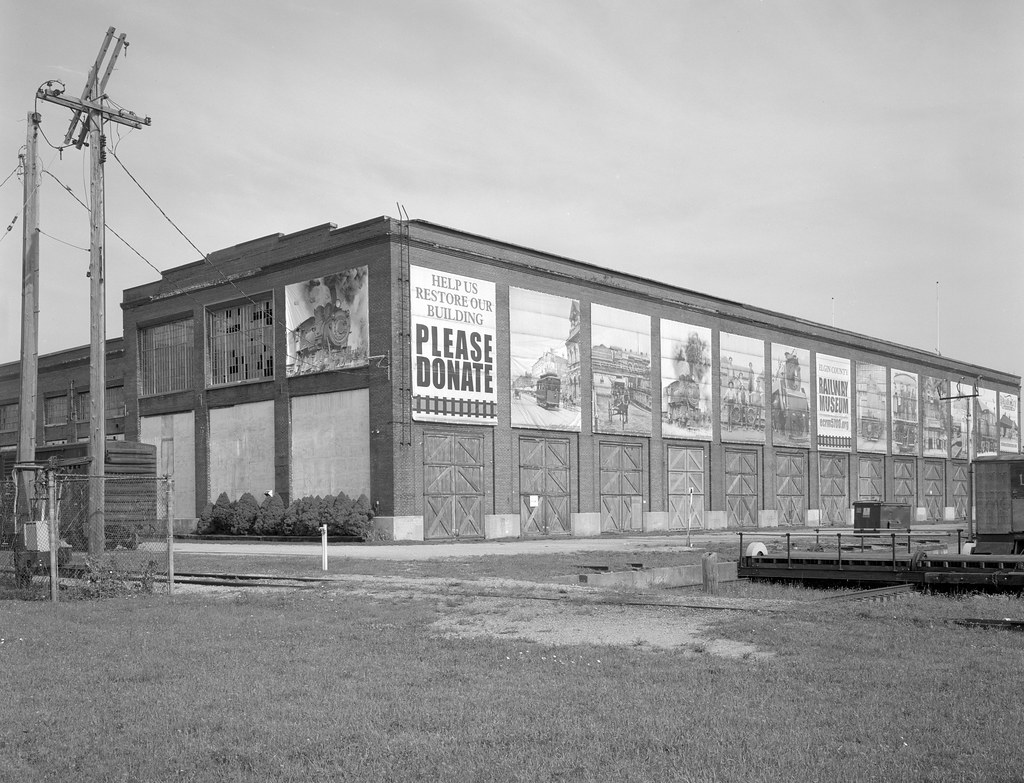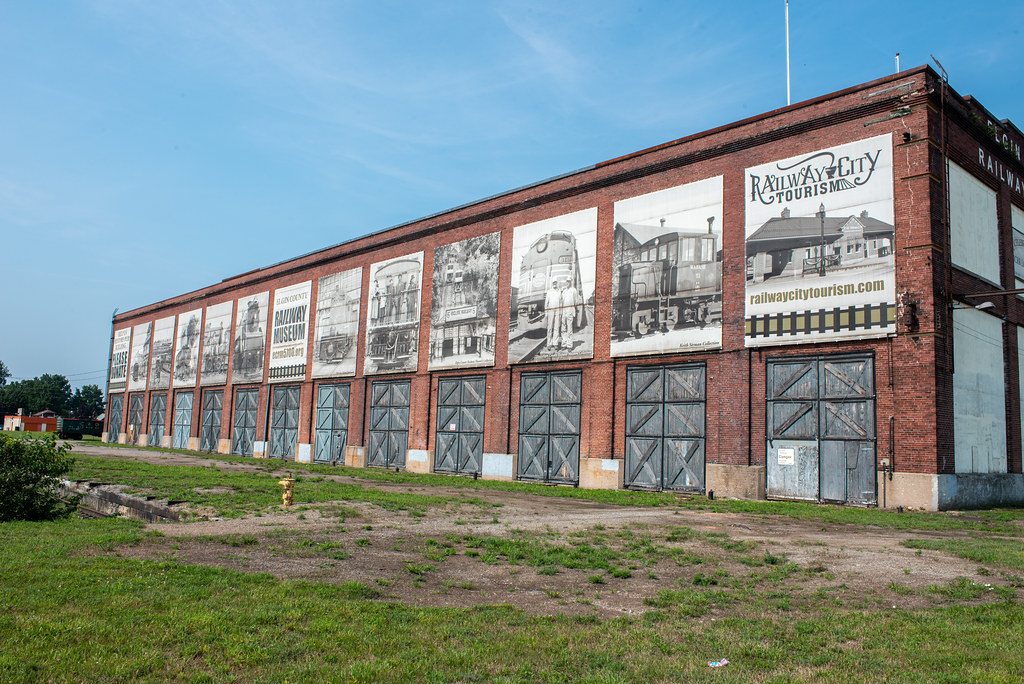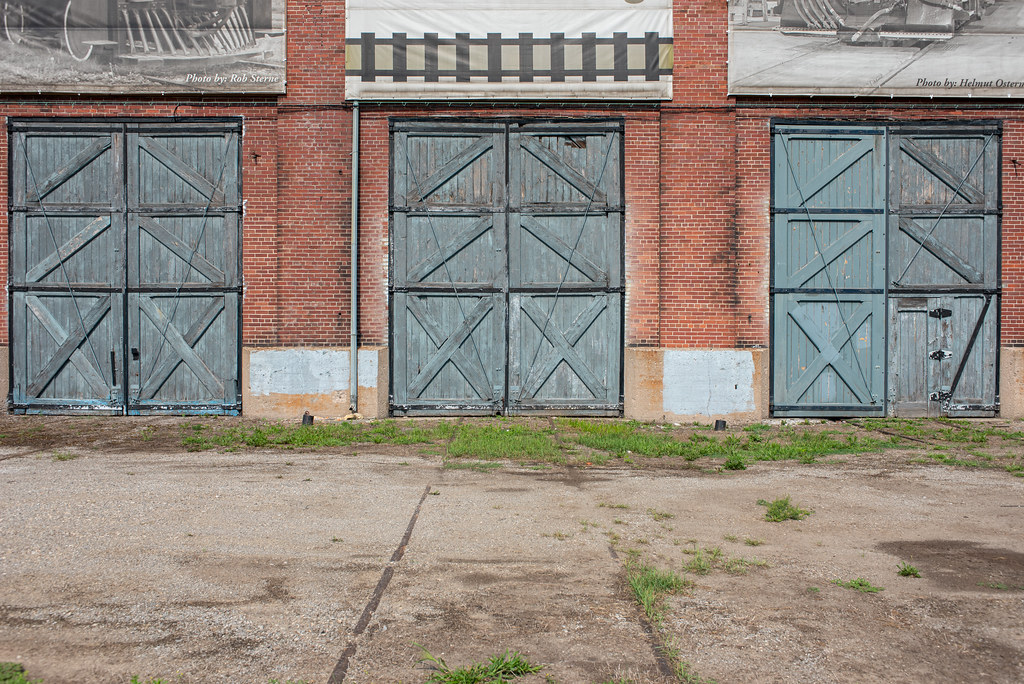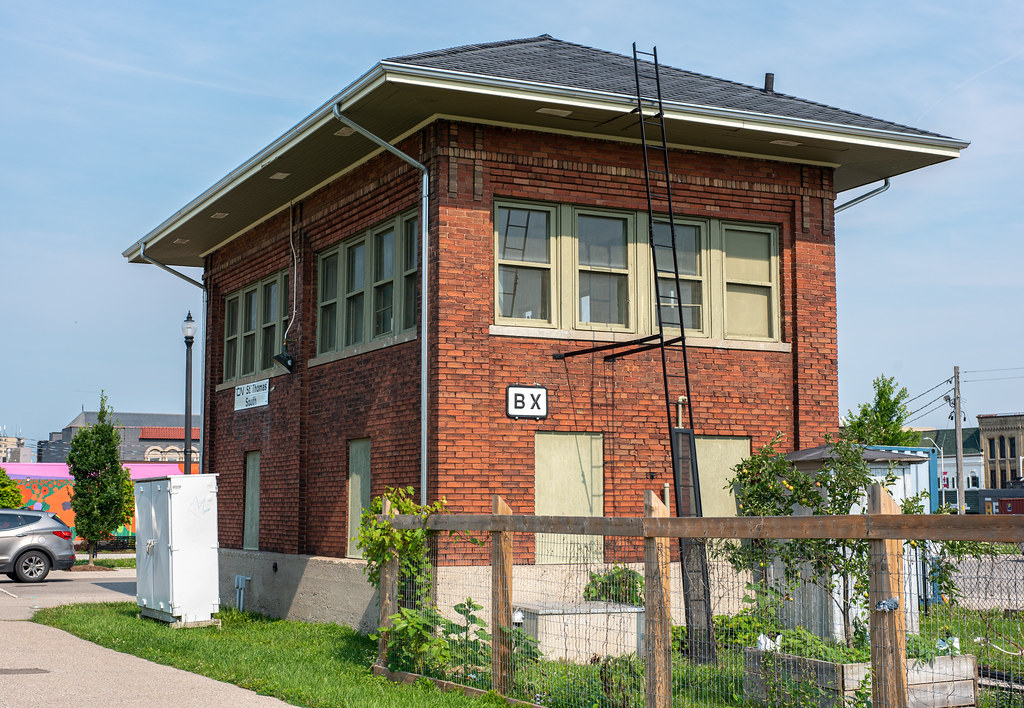While most people who visit St. Thomas will be immediately drawn to the beautiful Italianate station, it certainly gave the Canadian Southern Railway a strong presence in the community. As part of the deal with the town, Canadian Southern secured a 310-acre site which a single station did not need. Most of the site would become home to the only maintenance yard on the CASO network, and steam locomotives required far more maintenance than diesel-electric.

Graflex Crown Graphic – Fuji Fujinon-W 1:5.6/125 – Ilford HP5+ @ ASA-200 – Pyrocat-HD (1+1+100) 9:00 @ 20C
Construction of the yards began in 1871 with construction on the mainline. While most of the yard would be filled with a vast maze of tracks for storing, staging, and marshalling trains and cars, the site also contained a large set of buildings used to maintain the entire fleet. A single roundhouse provided storage and maintenance space for the locomotives and a turntable to allow accessible entrance and exit from the stalls. An engine house provided cover for locomotives and switchers, and a car shop allowed maintenance and storage of the fleet’s various box and passenger cars. Warehouses stored freight and parts for maintenance work. Rather than rely on local businesses, the yards contained a machine shop and blacksmith to produce the required details on site. When the yards opened in 1873, skilled workers flooded the community, and St. Thomas grew overnight. The new yards secured the title of Railway City to St. Thomas. By 1883, the arrival of the Michigan Central Railway took over the Canadian Southern line and increased the amount of work being done. Two new buildings were constructed: a new car shop that improved the capacity to build new railcars and a locomotive shop that could assemble new steam locomotives. While never significant manufacturers, all the equipment manufactured in St. Thomas was used only by Canadian Southern or Michigan Central.

Nikon D750 – AF-S Nikkor 28-70mm 1:2.8D
Nikon D750 – AF-S Nikkor 28-70mm 1:2.8D
As the century turned, locomotives increased in size and complexity. To answer the increased need for locomotive maintenance, Michigan Central, who had upped their lease to 999 years of Canadian Southern, began to lay down plans for new locomotive shops at St. Thomas. Construction of the new locomotive shops started in 1913. Plans called for a 5,000 square metre shop and all the latest equipment. A transfer table could quickly move locomotives in and out of the shop without needing many tracks and complex switching. The new shops opened with great fanfare and cost Michigan Central 250,000$ (~6,000,000$ in 2021). Electrical power generated on-site from a new power plant could power the electric cranes. The Michigan Shops could easily support and fully tear down and refurbish the largest locomotives in the fleet. In addition to providing jobs for skilled employees, it also offered apprenticeships. Students would learn math, drafting and engineering skills along with on-the-job practical training. They were ensuring that multiple generations could seek and secure Union employment. Even though the great depression with New York Central took control of Canadian Southern, work continued at St. Thomas.
As the railroads introduced diesel-motive power first to the switcher, then road duties, the St. Thomas shops quickly shifted. The size and construction ensured that staff could support the steam’s final days and move into diesel soon. While the 1916 shops survived, the 1950s saw many buildings in the yards meet the wrecking ball into the 1960s. By the time CONRAIL took control of St. Thomas in 1976, only tracks and the shops survived. To secure the Michigan Central Tunnel and excellent trackage, Canadian National and Canadian Pacific jointly purchased the entire Canadian Southern network in 1986. But neither needed maintenance shops and both operated several extensive maintenance facilities. Operations ceased in 1989, and the St. Thomas Yards fell silent after over a century.

Nikon D750 – AF-S Nikkor 28-70mm 1:2.8D
Nikon D750 – AF-S Nikkor 28-70mm 1:2.8D
Seeing the writing on the wall, the Elgin County Railway Museum formed the year the shops closed to preserve local rail heritage. While they did their best, having no home made it difficult to share that heritage. The shops ended up like many surplus rail properties in the development firm ONTRACK. Local heritage designations and entrance into the North American Hall of Fame in 2008 ensured that the shops would survive. But the question remained what would be done with the shops? Unlike the Stratford Motive Power Shops, which languished in 2010, the Eglin County Railway Museum secured the funding to purchase the shops. Over the past decade, the dedicated volunteers have worked hard to ensure rolling stock and artefacts and restore the old shops. One of the triumphs is restoring the St. Thomas BX Tower and completing a large model train set. The museum has also secured an extensive collection of locomotives, including Ex-CN 5700, a 4-6-4 “Hudson” locomotive, and Ex-CN 9197 EMD F7Au, a rare example of a preserved F-Unit Locomotive in Canada. Montreal Locomotive Works RSD-17, a prototype road-switcher, Ex-CP 8921 and London & Port Stanley L-1, an electric locomotive. Combined with the North American Railway Hall of Fame ensured that despite the railroad being a shadow in St. Thomas, the city retains the title of Railway City into 2022.

Nikon D750 – AF-S Nikkor 28-70mm 1:2.8D